AUTO-FOCUS: TOM BLAKE BY TOM BLAKE
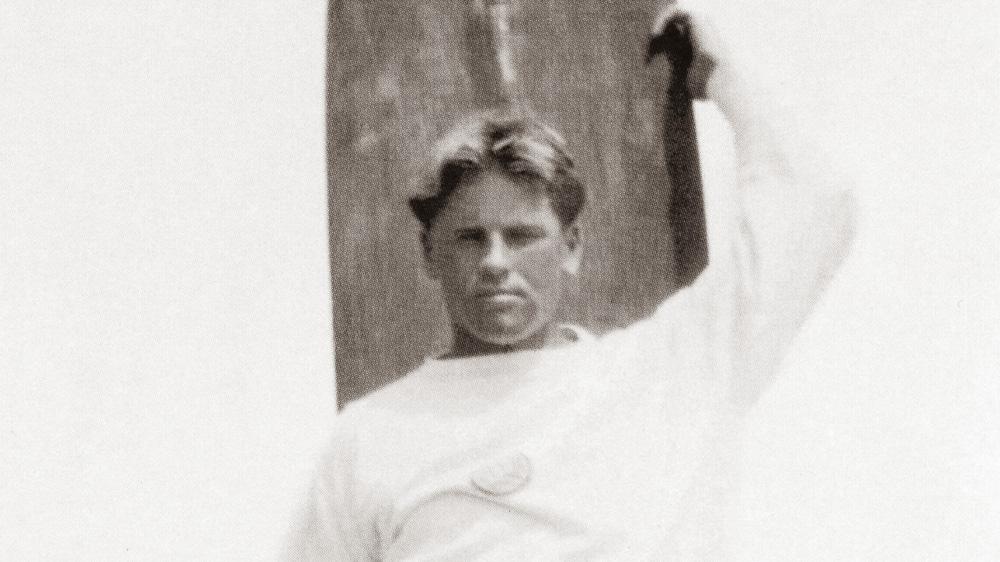
Tom Blake bought a barely-used top-handle Graflex Speed Graphic camera from Duke Kahanamoku in 1929. Blake had either owned or borrowed cameras prior to this, but the Graflex was a big step up, equipment-wise. The Speed Graphic model was famously used by Arthur Fellig—better known as Weegee—the first great American freelance photographer, a cigar-chewing urban auteur known for his vouyeristic flashlit blood-sweat-booze images of urban New York City. Blake, a teetotaler vegetarian who spent his life avoiding cities, crowds, and vice of any kind, used his Speed Graphic mostly to take photos of surfing and the the beach life.
Blake and Weegee did overlap, however, when it came to self-portraiture. Both men reveled in setting up and taking photos of themselves and did so for decades; Blake's earliest self-portraits go all the way back to the early 1920s, not long after he arrived in Los Angeles. Blake in fact was posing as a surfer—that is, taking photos of himself with a surfboard as a prop—before he actually owned his own board.
The portaits looked, and still look, amazing. Blake knew instinctively how to hold himself, how to look at the camera, how to not at the camera. His grooming and casual dress style were impeccable. He had a passing resemble to Clark Gable (who Blake stunt-doubled for in 1940's Strange Cargo) and was built like gold medal swimmer Johnny Weissmuller (who Blake competed against).
Blake was no longer striking dramatic poses by the 1940s, but his postwar self-portraits are in some ways more eye-catching than the earlier ones, as Blake is just as willing to put his own quiet and time-worn solitude on view as he was his chiseled pre-war physique.
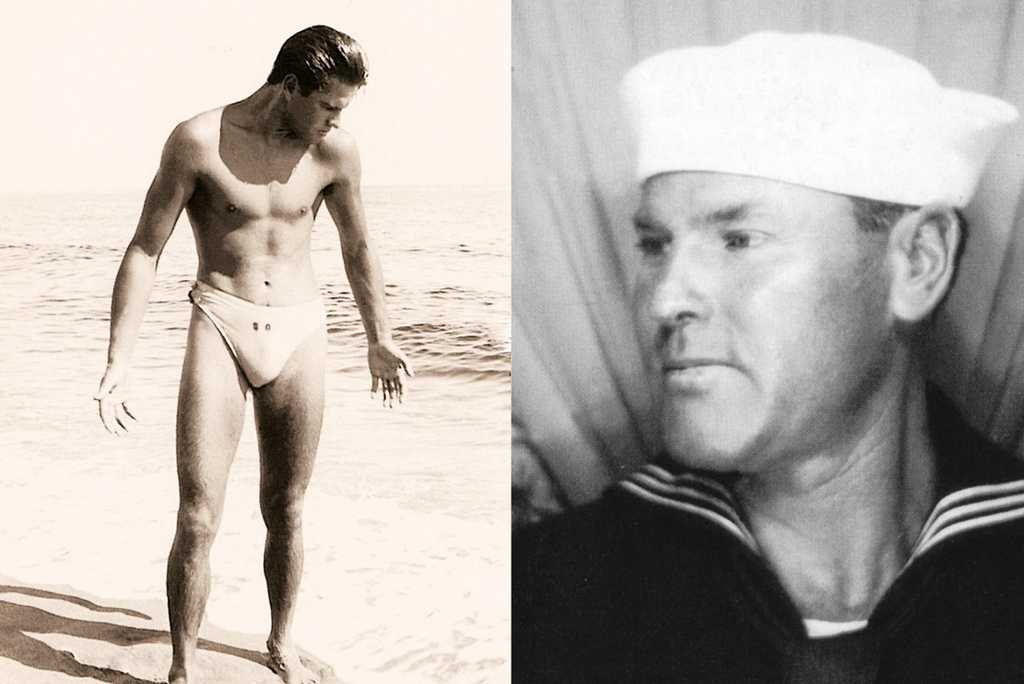
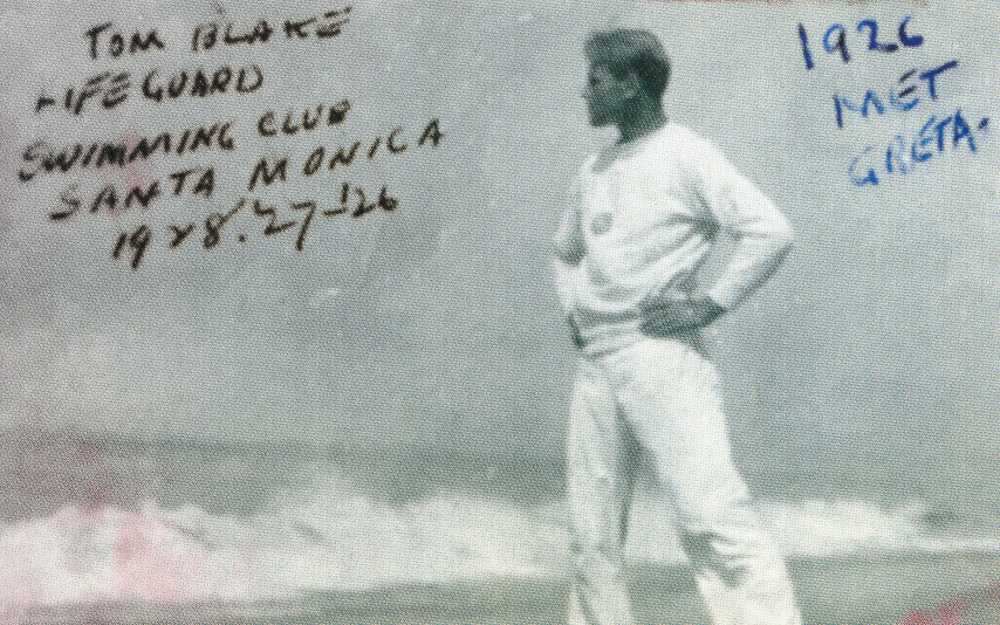
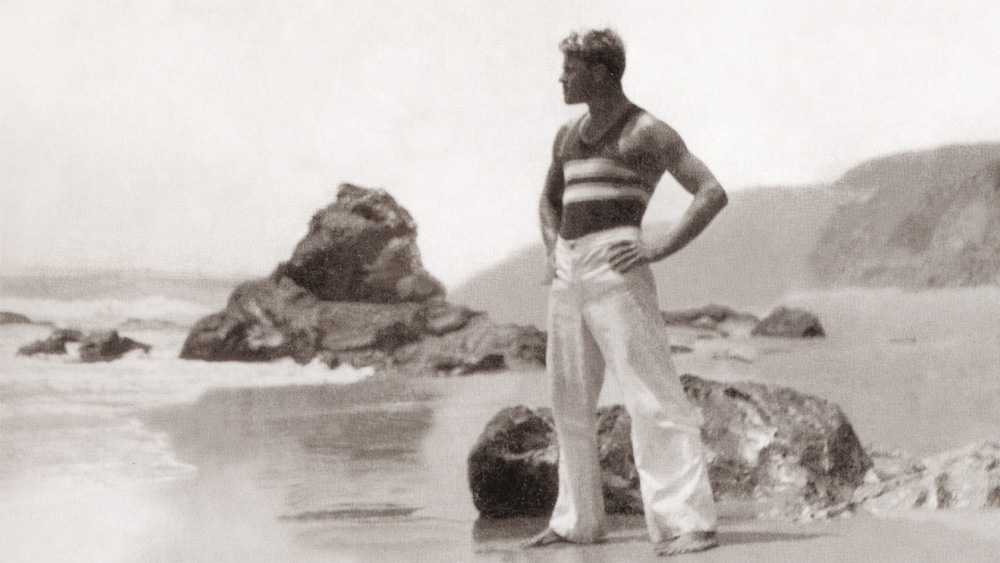
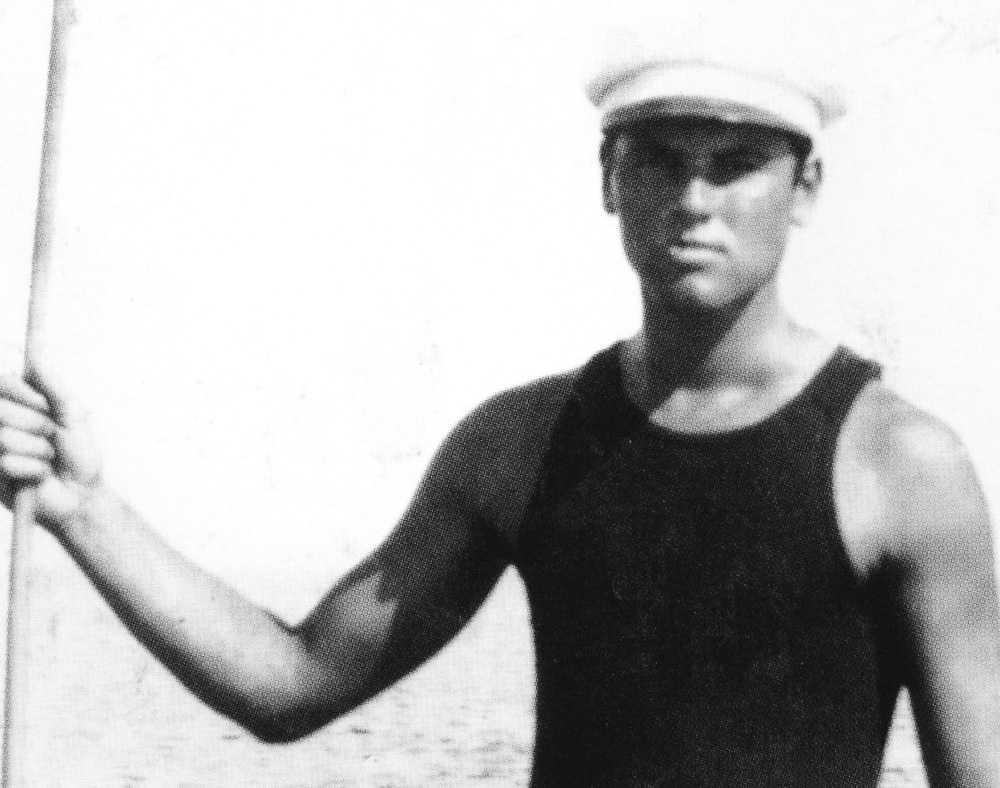
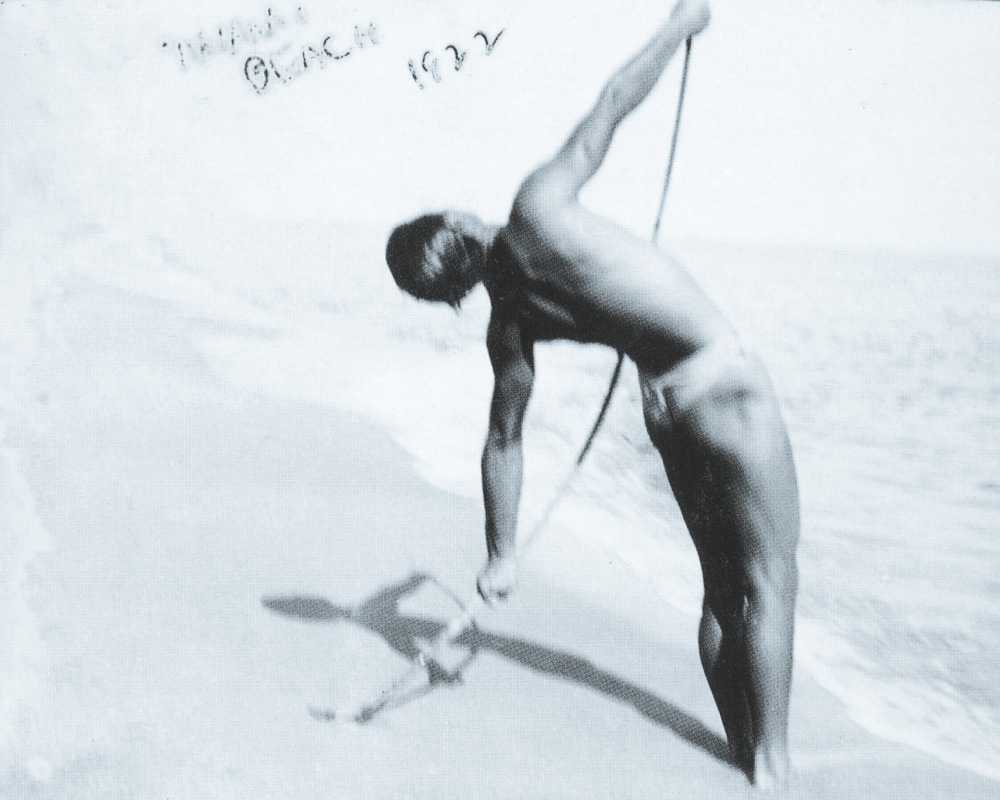
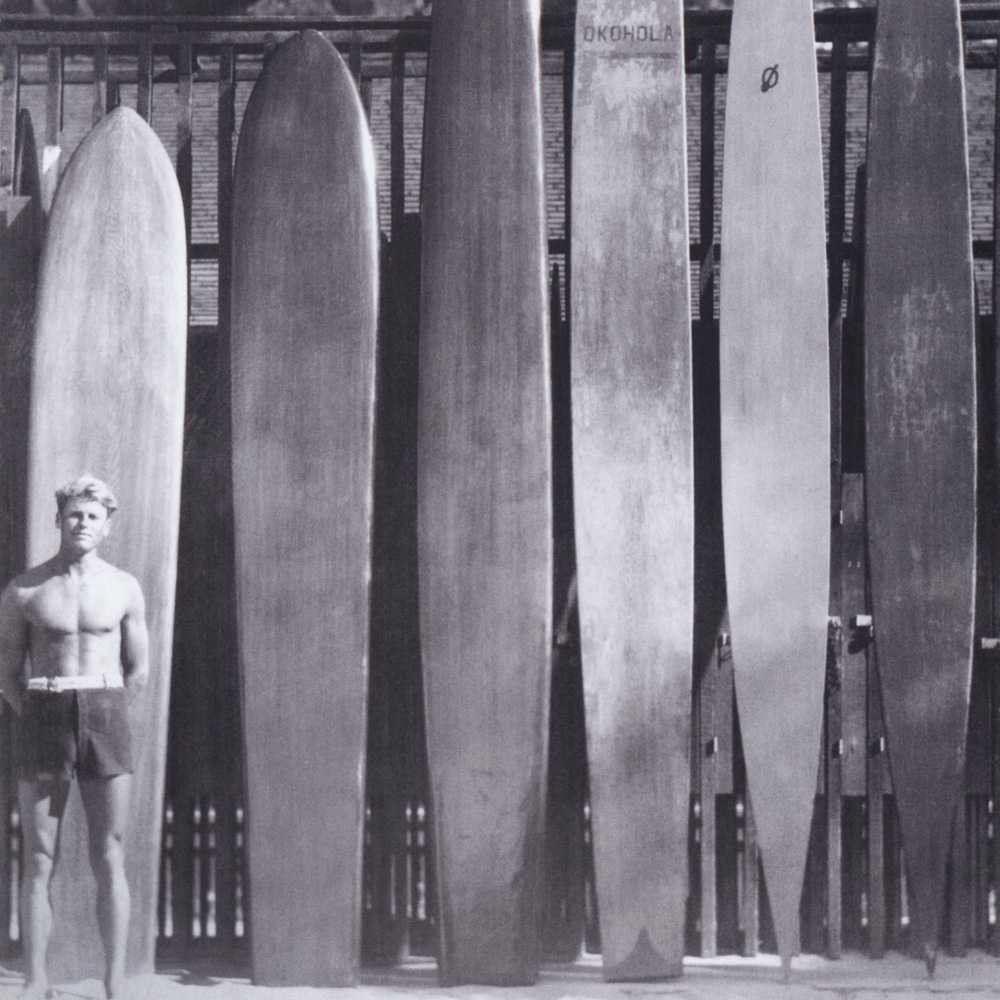
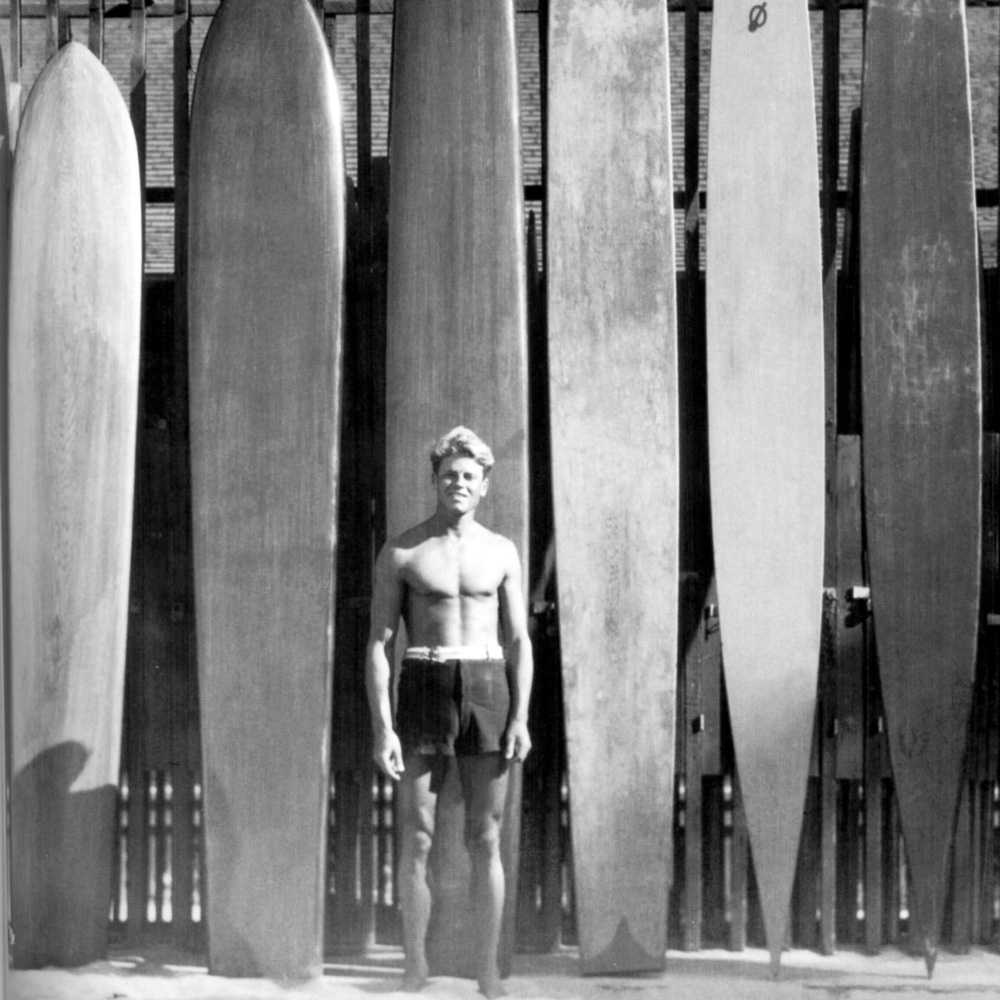
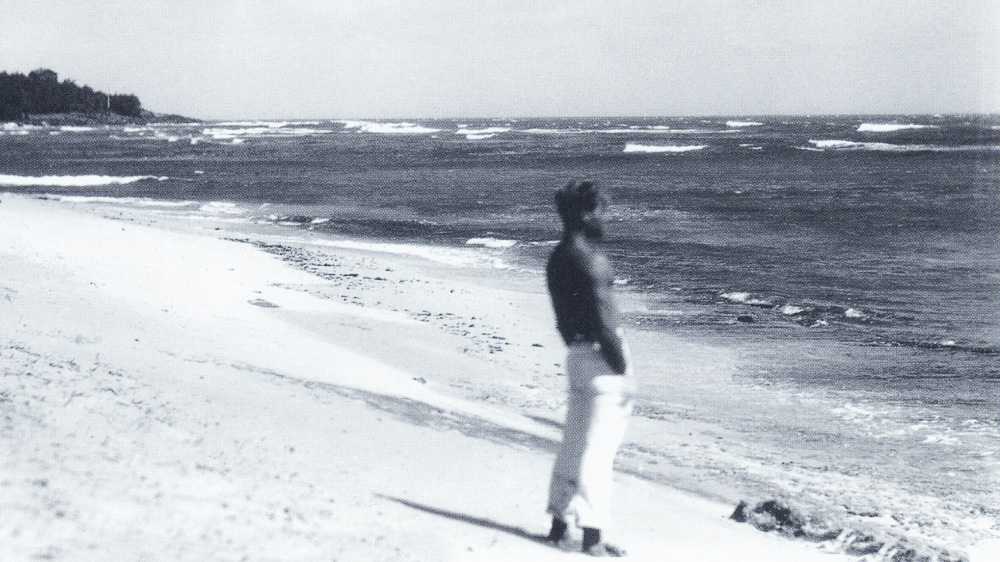
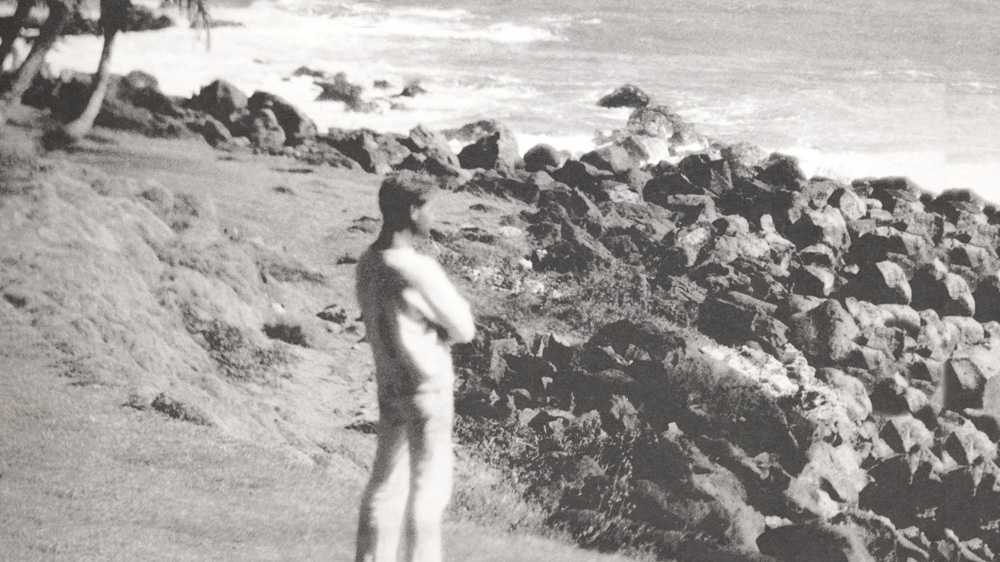
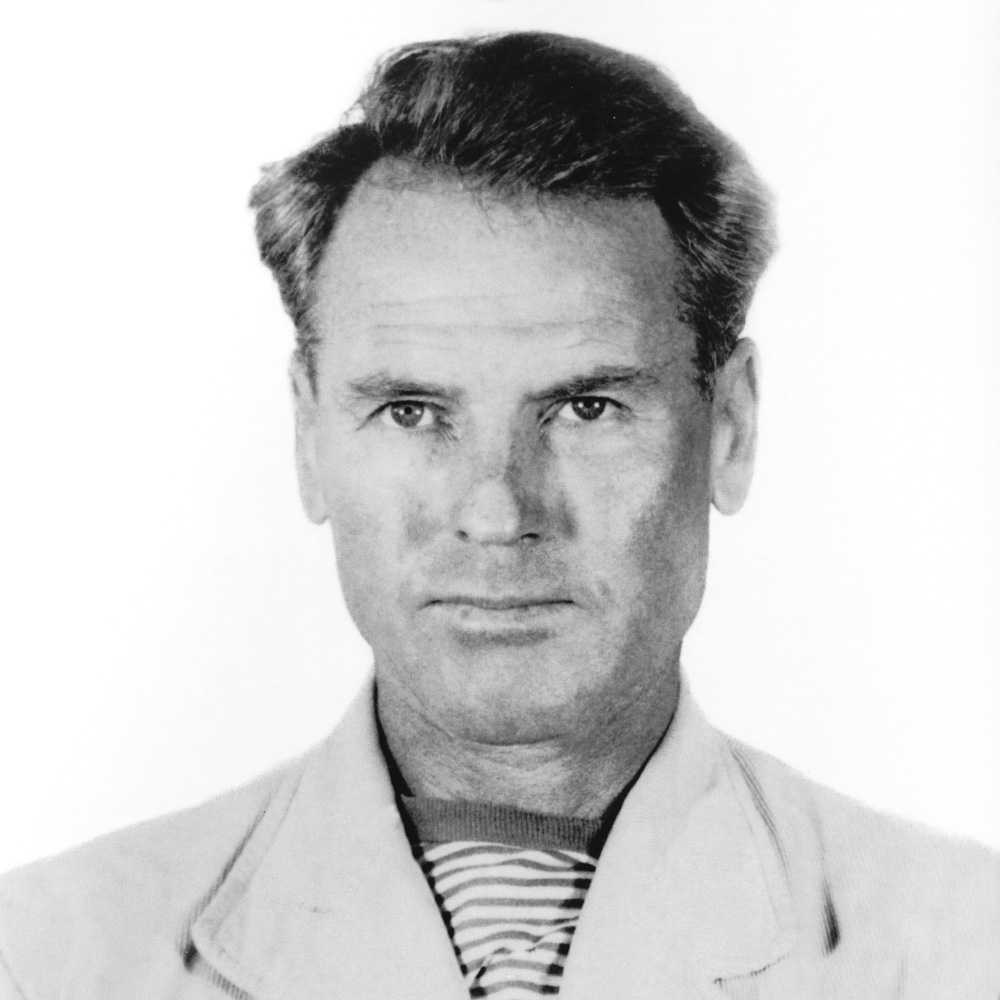
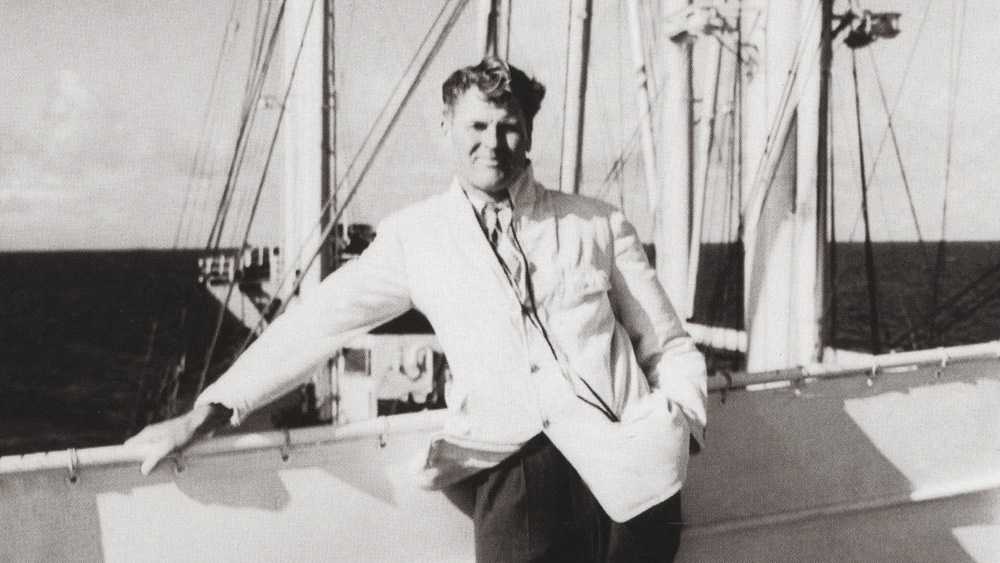
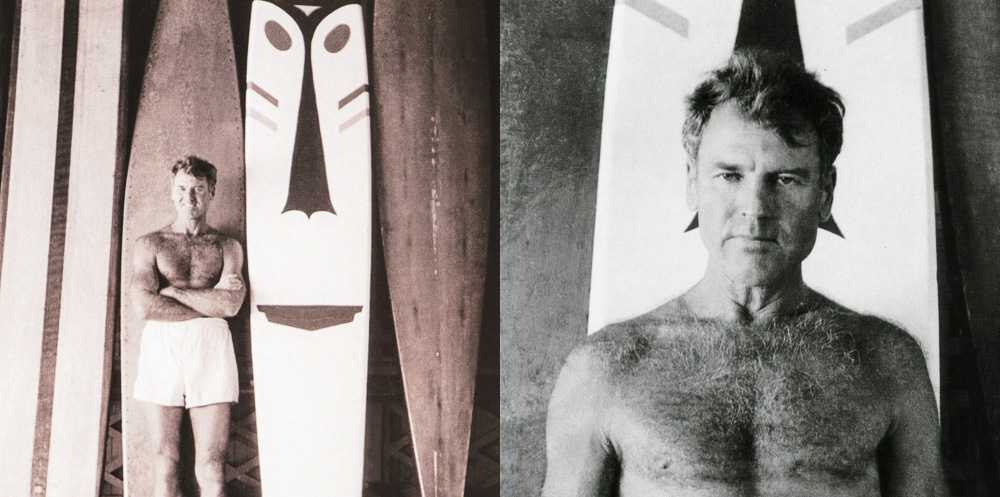
[More Blake photos and information can be found in Tom Blake: the Uncommon Journey of a Pioneer Waterman, by Gary Lynch and Malcolm Gault-Williams, published by the Croul Family Foundation]